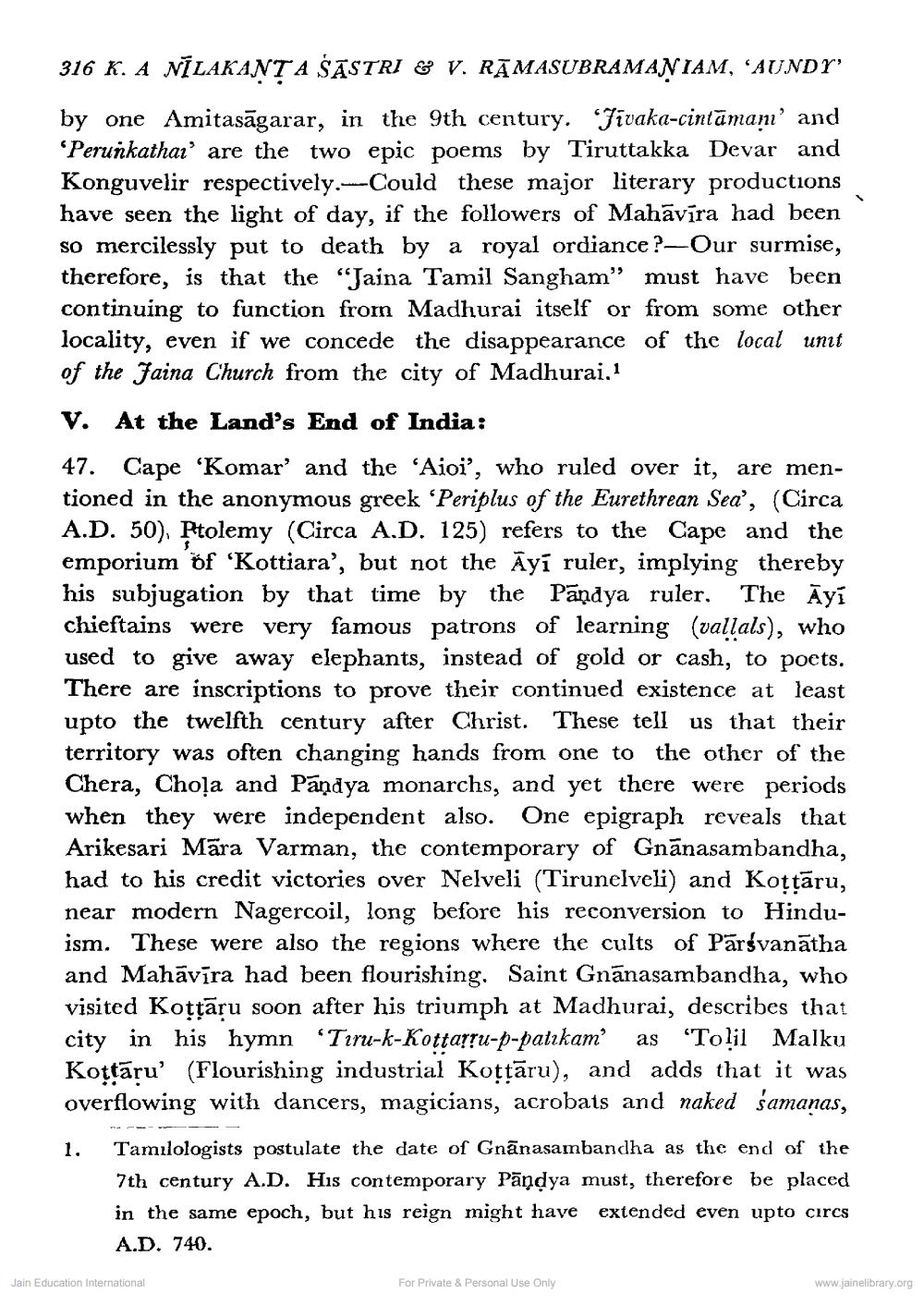________________
316 K. A NĪLAKANT A SĀSTRI & V. RĀMASUBRAMANIAM, `AUNDY by one Amitasāgarar, in the 9th century. “Jivaka-cintāmam' and 'Perunkathai are the two epic poems by Tiruttakka Devar and Konguvelir respectively.--Could these major literary productions have seen the light of day, if the followers of Mahāvīra had been so mercilessly put to death by a royal ordiance?-Our surmise, therefore, is that the "Jaina Tamil Sangham" must have been continuing to function from Madhurai itself or from some other locality, even if we concede the disappearance of the local unit of the Jaina Church from the city of Madhurai.1 V. At the Land's End of India: 47. Cape 'Komar' and the 'Aioi', who ruled over it, are mentioned in the anonymous greek 'Periplus of the Eurethrean Sea', (Circa A.D. 50). Ptolemy (Circa A.D. 125) refers to the Cape and the emporium of Kottiara', but not the Āyí ruler, implying thereby his subjugation by that time by the Pandya ruler. The Āyí chieftains were very famous patrons of learning (vallals), who used to give away elephants, instead of gold or cash, to poets. There are inscriptions to prove their continued existence at least upto the twelfth century after Christ. These tell us that their territory was often changing hands from one to the other of the Chera, Choļa and Pandya monarchs, and yet there were periods when they were independent also. One epigraph reveals that Arikesari Māra Varman, the contemporary of Gnānasambandha, had to his credit victories over Nelveli (Tirunelveli) and Kottāru, near modern Nagercoil, long before his reconversion to Hinduism. These were also the regions where the cults of Pārsvanātha and Mahāvīra had been flourishing. Saint Gnanasambandha, who visited Koțțāru soon after his triumph at Madhurai, describes that city in his hymn "Tiru-k-Kottarğu-p-patikam' as 'Tolil Malku Kottāru' (Flourishing industrial Koţtāru), and adds that it was overflowing with dancers, magicians, acrobats and naked šamanas, 1. Tamilologists postulate the date of Gnānasambandha as the end of the
7th century A.D. His contemporary Pāņdya must, therefore be placed in the same epoch, but his reign might have extended even upto circs A.D. 740.
Jain Education International
For Private & Personal Use Only
www.jainelibrary.org




